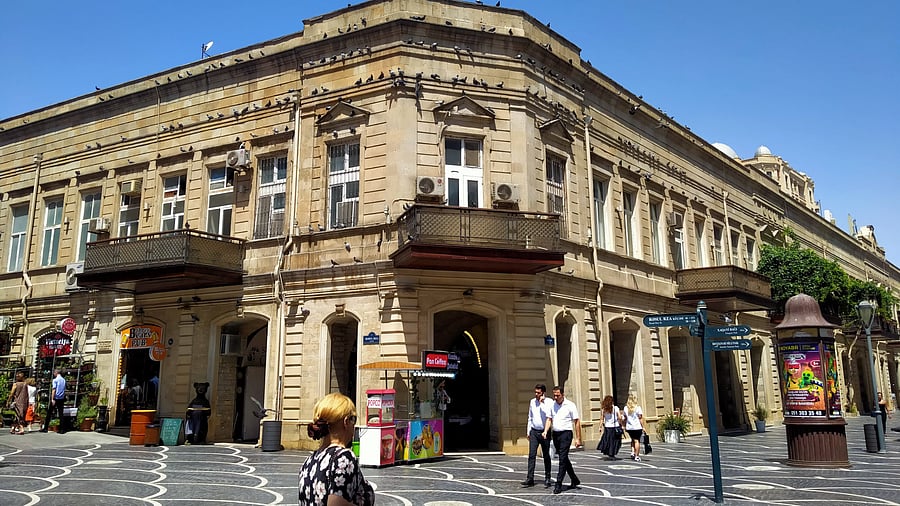
The bustling Nizami Street.
Credit: Photo by author
The beautiful nation of Azerbaijan is an exceptional destination for many reasons; famous for its transcontinental location between the Asian and European continents, exotic geography, and confluences of cultures making it a versatile destination for travellers. A hit with Instagrammers, who are already flocking here due to quick connectivity, cheap tickets, and easy e-visa process, the country offers a mix of cultural and visual treats. This summer, if you are planning a trip to Baku, include these pit stops in your itinerary for a wholesome holiday.
Glorious Baku
The capital city of Baku is a fine example of the Azerbaijani heritage and warm traditions that are unique to the nation. The city’s skyline is dotted with modern skyscrapers like the Flame Towers built in the shape of fire flames, the Heydar Aliyev Centre, the Carpet Museum (shaped like a rolled-up rug), and the panoramic Highland Park, In the heart of the city lies the ancient cobbled streets leading to old-world forts, sarais, museums, and bustling street markets.
Start your walking tour from Nizami Street, the vibrant old-town market with cobbled pathways and buzzing cafés that double up as party joints after dark. At the entry of the gated old city aka Icherisheher, you’ll pass the National Museum of Azerbaijan Literature named after poet Nizami Ganjavi. The Walled City of Baku is famous for the iconic Palace of the Shirvanshahs and the Maiden Tower. Both these monuments are preserved under the UNESCO World Heritage List and are considered national pride. The imagery of these majestic monuments can be seen as official symbols and printed on different denominations of Azerbaijani Manat, the local currency.
The 15th-century Palace of the Shirvanshahs in Baku preserves the soul of the Shirvanshah dynasty rulers, who constructed a magnificent complex for their clan and official cluster. Constructed on the principles of Shirvan-Absheron designs, the palatial premises include a dome-shaped mosque, Seyid Yahya Bakuvi’s mausoleum of the dervish with engraved marble inscriptions, Divankhana (reception hall), a colossal Murad Gate, hammam (bath houses), and ovdan (reservoir) constructed around the medieval period. A little walk ahead is the Gyz Galasy or Maiden Tower, another landmark building along Baku Bay and a symbol of the city’s old-world charm. The cylindrical-shaped tower is built on a solid rock foundation and demonstrates a fusion of Arabic, Persian and Ottoman influences.
A little ahead of the main city is a significant holy site for Zoroastrians and Hindus, the Ateshgah aka the Fire Temple of Baku, built like a castle in Surakhany town during the 17th-18th centuries by fire-worshipping Zoroastrians. Pronounced as “Atesh-gahor” meaning the ‘home of fire’, it was built atop a now-exhausted natural gas field, which kept the eternal flame burning and became a point of pilgrimage for fire-worshipping Zoroastrians until the end of the 19th century.
Royal residences of Sheki
In the northwest part of Azerbaijan is the city of Shaki or Sheki, known for the Palace of Shaki Khans, the powerful Caucasian royals who ruled the mountainous region from the 16th to 17th century. The double-storey summer residence of Shaki Khan is popular for its rare architectural work denoted by an expressive rectangular structure, shiny walls with reflective embellishments, and multi-coloured artwork done with tiles. The old town of Sheki is a preserved region, where one can still find cobblestone pathways and ancient caravanserai (roadside inns) constructed beautifully on the natural lush slopes of the Caucasian mountain range.